BIG BANG NEWS
RESEARCH, TECHNOLOGY, SCIENCE, DIACHRONIC NEWS, COMMENTS, ,SPORTS,MUSIC,SKY AND STARS,AND MUSH MORE.
Αναζήτηση αυτού του ιστολογίου
Δευτέρα 13 Ιανουαρίου 2014
MEGA TACO MUD TRUCK CRASH
DVDs & APPAREL - http://www.bustedknuckle.com
This is by far the baddest Tacoma on the planet. Well at least the body is a Tacoma...that's about it. It is comparable to King Sling.
Follow us on Facebook - http://www.facebook.com/bustedknuckle.
Mk 15 Phalanx Close In Weapon System
The Phalanx CIWS is a close-in weapon system for defending against anti-ship missiles -- there is also a land based variant called C-RAM. The system was designed and built by General Dynamics Corporation - Pomona Division, which is now part of major American defense contractor -- Raytheon. The phalanx is made up of radar controlled Gatling Gun mounted on a rapidly swivelling base. The gun is a 20 mm (0.79 in) 6 barrelled M61 Vulcan Gatling Gun. The latest version has a fire fate of 4,500 rounds per minute -- the rounds are either armour-piercing tungsten penetrator rounds or depleted uranium with discarding sabots. The rounds have been designed to pierce and explode an incoming missile's warhead. The Phalanx is installed on every US surface combat ship, including some US Coast Guard vessels, and the system has been bought by 16 allied countries including --Australia, Bahrain, Canada, Greece, Egypt, Israel, Japan, Mexico, Pakistan, Poland, Portugal, Saudi Arabia, Thailand, Taiwan, United Kingdom, and New Zealand.
Will.i.am visits CERN
Will.i.am visited CERN in December 2013, fulfilling a wish he made in a video-link appearance at TEDxCERN a few months earlierhttp://tedxcern.web.cern.ch/video/cho....
During his visit, he was shown the Antimatter Decelerator, the underground ATLAS experiment cavern and the CERN Control Centre.
He also took the opportunity to promote CERN's beam line for schools competition, which offers high-school students the chance to conduct a real experiment using a CERN proton beam if they register by 31 January 2014. Find out more via http://cern.ch/bl4s
ΤΟ ΗΦΑΙΣΤΕΙΟ ΣΤΗΝ ΙΝΔΟΝΗΣΙΑ ΞΕΡΑΣΕ "ΧΡΥΣΑΦΙ" VOLCANO IN INDONESIA puke "GOLD"
| ΤΟ ΗΦΑΙΣΤΕΙΟ ΣΤΗΝ ΙΝΔΟΝΗΣΙΑ ΞΕΡΑΣΕ "ΧΡΥΣΑΦΙ" | VOLCANO IN INDONESIA puke "GOLD" |
In Indonesia's East Java province, the Ijen crater is filled with one of the largest sulphuric lakes on the planet.
Here, sulphur miners brave the hazadrous environment to extract blocks of pure sulphur using simple tools.
Sulphur, referred to in the Bible as "brimstone", is an essential element for all life on Earth. But its dirivatives, such as sulphur dioxide and sulphuric acid, can be very dangerous for the lungs and eyes and can cause very serious chemical burns.
In a single day, a miner in Ijen can haul up to 100kg (220lbs) of sulphur, earning an average of $6 per day.
View As Slideshow >>

/Gembong Nusantara/Al Jazeera
A miner carries a large chunk of high-purity sulphur.
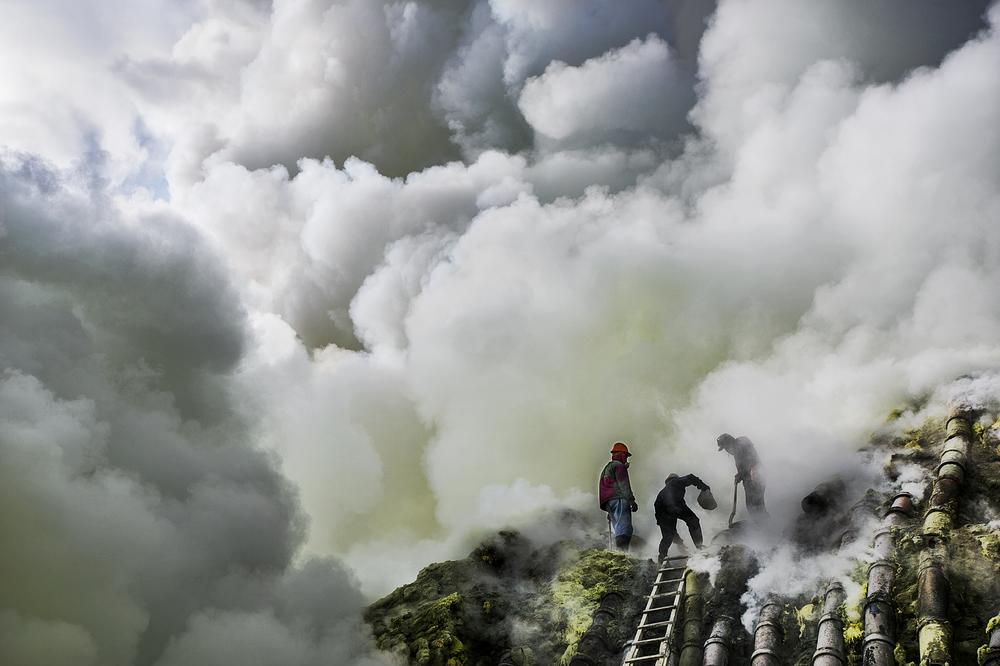
/Gembong Nusantara/Al Jazeera
Miners put ceramic pipes on vents where sulphur gases come out.
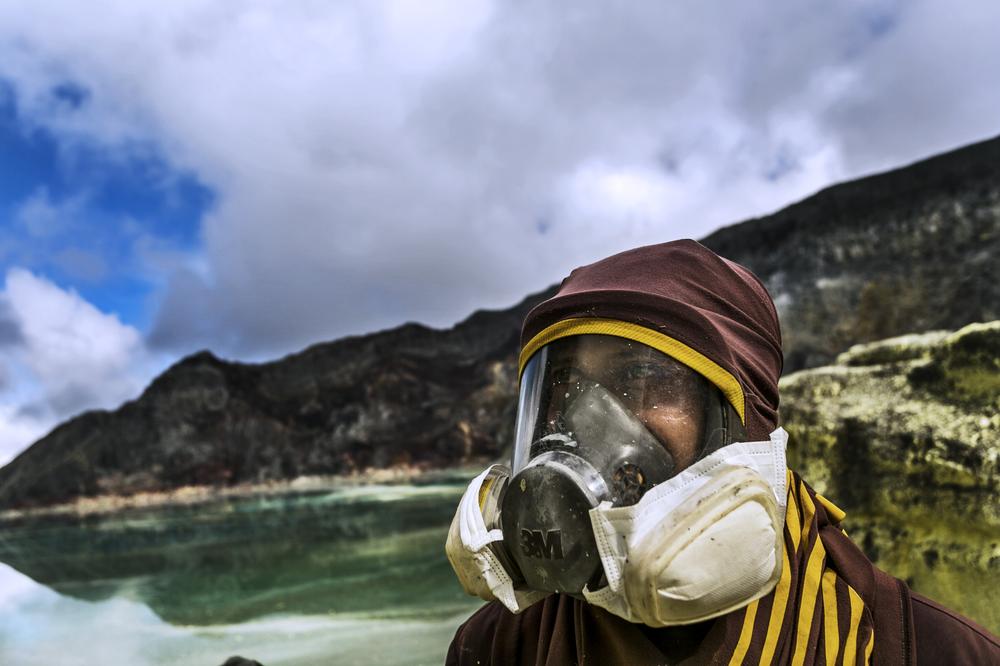
/Gembong Nusantara/Al Jazeera
A sulphur miner wears a full-face gas mask. Due to the hostile environment, full body cover is recommended for miners.

/Gembong Nusantara/Al Jazeera
Sulphur miners carrying a fully loaded basket with sulphur chunks climb up Ijen crater.
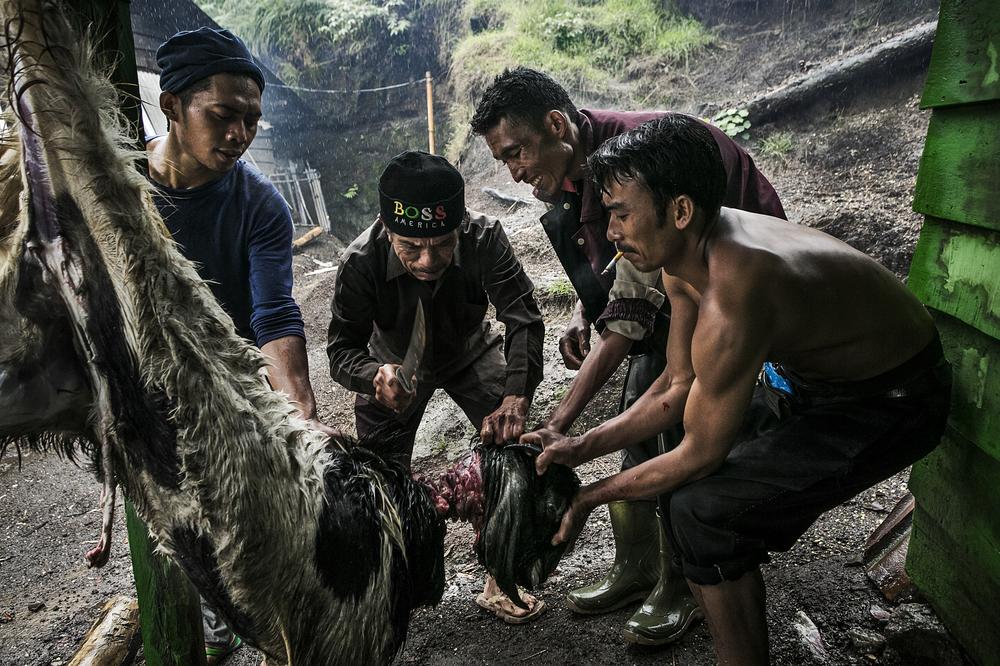
/Gembong Nusantara/Al Jazeera
Miners slaughter a goat as they prepare for an annual sacrificial ritual in the Ijen sulfur crater. The ritual began in 1976 after a tragedy that killed four miners.

/Gembong Nusantara/Al Jazeera
Miners pray together for salvation during the ritual, in a cabin near the crater.
/Gembong Nusantara/Al Jazeera
Every mid-December, miners offer one goat's head as part of the salvation ritual. The miners' company covers the expenses.
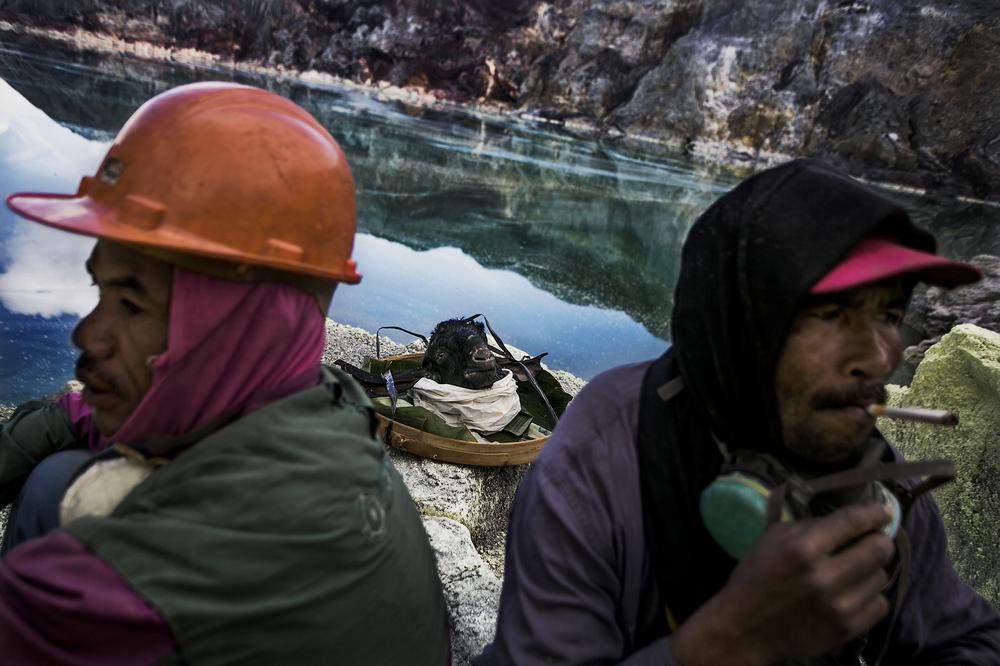
/Gembong Nusantara/Al Jazeera
The offering is put on a lakeside rock as miners wait to perform the sacrificial ritual. The water of the lake has the same acidic level as car batteries.

/Gembong Nusantara/Al Jazeera
Miners bring a goat head to bury in the sulphur pipes as part of the annual ritual.
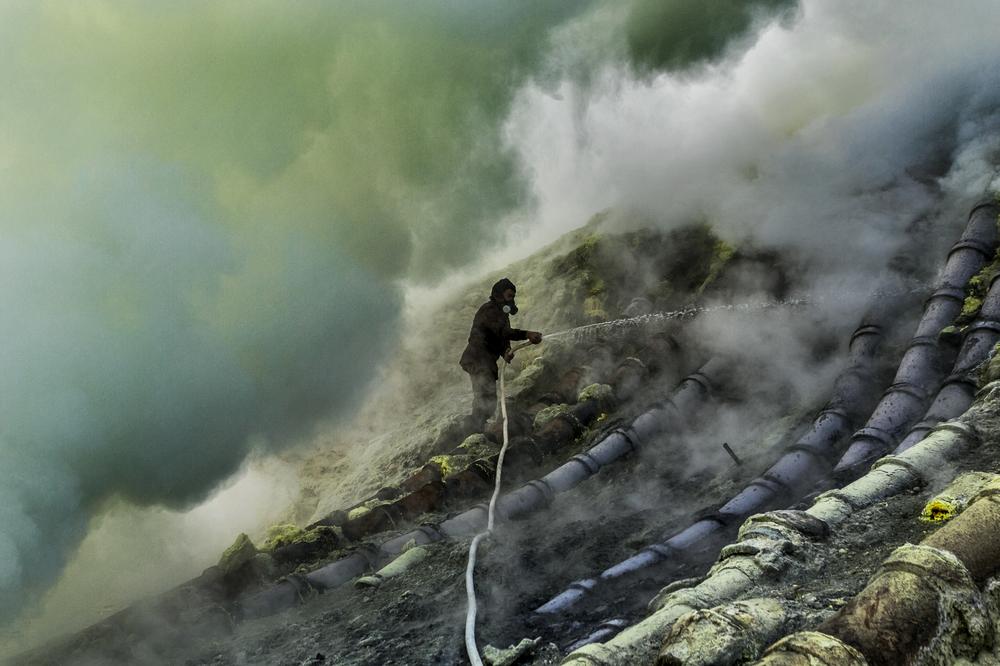
/Gembong Nusantara/Al Jazeera
A miner sprays water onto sulfur pipes as he prepares the area for the offering.

/Gembong Nusantara/Al Jazeera
Sulphur miners work at Ijen crater after the ritual.
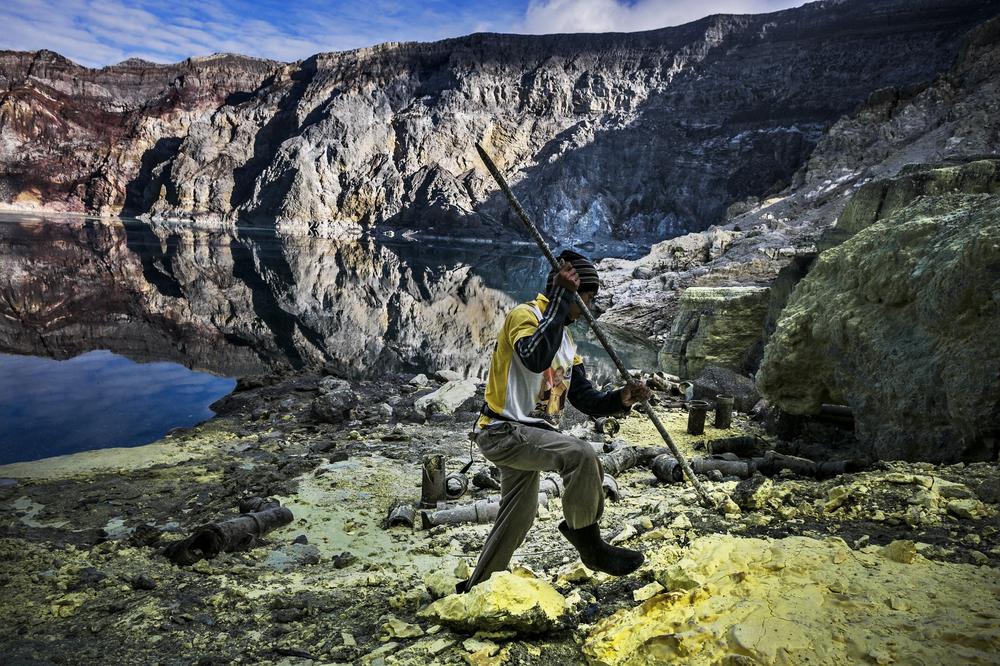
/Gembong Nusantara/Al Jazeera
A miner extracts sulphur at the Ijen crater lakeside.
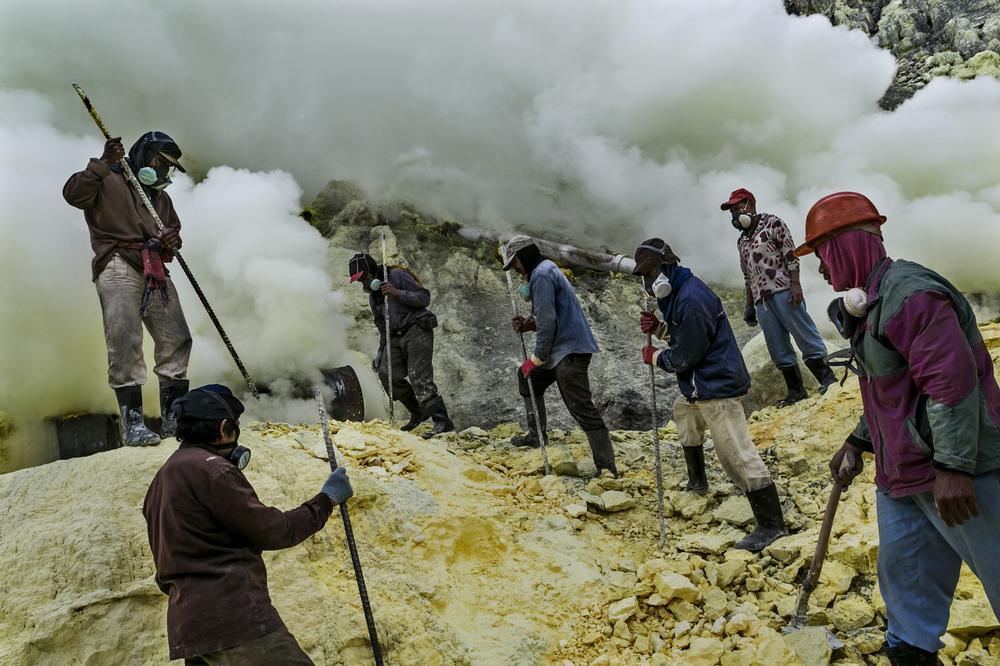
/Gembong Nusantara/Al Jazeera
Miners extract sulphur using the most basic tools. For every kilogram they mine they get paid seven cents.
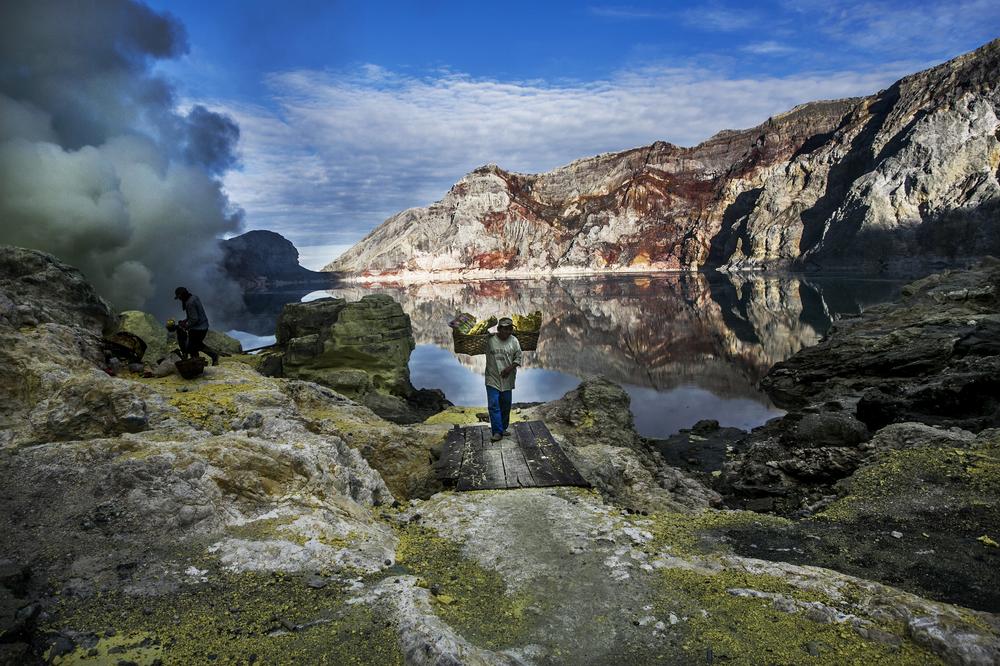
/Gembong Nusantara/Al Jazeera
A miner holds two baskets with sulphur. In one day a miner can carry out around 100 kilograms of sulphur.
Κυριακή 12 Ιανουαρίου 2014
NASA rover’s tracks on Mars
NASA rover’s tracks on Mars
Enhanced color image showing where Curiosity rover zigzagged to avoid obstacles as it made its way across the primeval red desert sands of Mars.

View larger. | Two parallel tracks left by the wheels of NASA’s Curiosity Mars rover cross rugged ground in this portion of a Dec. 11, 2013, observation by the High Resolution Imaging Science Experiment (HiRISE) camera on NASA’s Mars Reconnaissance Orbiter. The rover itself does not appear in this part of the HiRISE observation.
From the time it landed on Mars on August 5, 2012 – until a Mars orbiter captured this image on December 11, 2013 – NASA’s Curiosity had driven about 2.86 miles (4.61 kilometers) on the surface of Mars. This enhanced color image shows where the rover zigzagged to avoid steep slopes and other obstacles as it made its way across Mars’ primeval red desert sands, heading toward the lower slopes of Mount Sharp, the central peak of the Gale Crater, where Curiosity set down. NASA said:
Curiosity is progressing from a bright dust-covered area to a region with a darker surface, where windblown sand scours the surface relatively free of dust. For scale, the two parallel lines of the wheel tracks are about 10 feet (3 meters) apart.
The image came from HiRISE, one of six instruments on NASA’s Mars Reconnaissance Orbiter. Does it thrill you, or bother you, that we humans are making tracks on Mars? If it does bother you at all, remember that Mars isn’t like Earth’s moon. It isn’t airless. Mars has winds and weather and likely soon will cover Curiosity’s tracks with blowing dust.
Bottom line: The HiRISE camera on NASA’s Mars Reconnaissance Orbiter captured a wonderful image of tracks on Mars, made by the Curiosity rover between August 2012 and December 2013.
Εγγραφή σε:
Αναρτήσεις (Atom)
